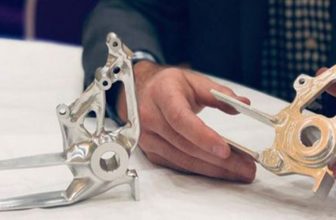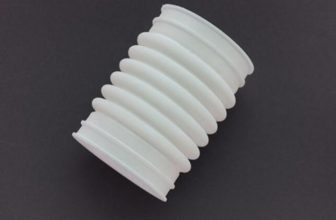
Fused Deposition Modeling (FDM) or Fused Filament Manufacturing (FFF) is an additive manufacturing process that belongs to the series of material extrusion. In FDM, objects are constructed by selectively depositing molten materials layer by layer in a predetermined path. The material used is a thermoplastic polymer, which is filamentous. FDM is the most widely used 3D printing technology, it represents the world’s largest 3D printer installation base, and is usually the first technology people come into contact with.
- The working principle of the FDM3D printer manufacturing process
- First load a roll of thermoplastic filament into the 3D printer. Once the nozzle reaches the desired temperature, the filament is fed into the extrusion head and melted in the nozzle.
- The extrusion head is connected to a 3-axis system, allowing it to move in the X, Y and Z directions. The molten material is extruded into thin lines and deposited layer by layer in a predetermined location, where it is cooled and solidified. Sometimes, the cooling of the material is accelerated by using a cooling fan installed on the extruder head.
- To fill an area, multiple passes are required. After one layer is completed, the build platform moves down (or in other machine settings, the extrusion head moves up) and a new layer is deposited. Repeat this process until the part is complete.
Second, the characteristics of FDM3D printing
- Warpage
Warpage is one of the most common defects in FDM3D printers. When the extruded material cools during solidification, its size decreases. Since different parts of the print cool at different speeds, their size will also change at different speeds. Differential cooling can cause internal stress to build up, pulling the bottom layer upward, causing it to warp. From a technical point of view, it is possible to prevent warping of the platform and chamber by monitoring the temperature of the FDM system more closely, and by increasing the adhesion between the parts and the build platform.
Can reduce the probability of warpage:
Large flat areas (think rectangular boxes) are more likely to warp and should be avoided as much as possible.
Thin, prominent features (think forks) are also prone to warping. In this case, you can avoid warping by adding some sacrificial material to the edges of thin features (for example, a 200-micron thick rectangle) to increase the area of contact with the build platform.
Sharp corners warp more easily than rounded corners, so adding rounded corners to your design is a good practice.
Different materials are more prone to warpage: Compared with PLA or PETG, ABS is generally more sensitive to warpage because of its higher glass transition temperature and relatively higher coefficient of thermal expansion.
- Supporting structure
The supporting structure is essential for creating overhanging geometry in FDM. The molten thermoplastic cannot be deposited in thin air. For this reason, certain geometries require support structures. The surface quality of the surface printed on the support is generally lower than the rest of the part. For this reason, it is recommended that the parts are designed in a way that minimizes the need for support.
- Filling and shell thickness
FDM parts are usually not physically printed to reduce printing time and save materials. The interior is filled with an internal low-density structure called filler. Filling and shell thickness have a great influence on the strength of the part. For desktop FDM3D printers, the default setting is 25% filling density and 1 mm shell thickness, which is a good compromise between fast printing strength and speed.
- Advantages and limitations of FDM
advantage
- FDM is the most cost-effective way to produce custom thermoplastic parts and prototypes.
- Due to the high availability of the technology, the delivery time of FDM is very short.
- There are a variety of thermoplastic materials to choose from, suitable for prototyping and some non-commercial functional applications.
limitation
- Compared with other 3D printing technologies, FDM 3D printing technology has the lowest dimensional accuracy and resolution, so it is not suitable for parts with complex details.
- FDM3D printed parts may have visible layer lines, so post-processing is required to obtain a smooth surface.
- The layer adhesion mechanism gives FDM parts inherent anisotropy.





